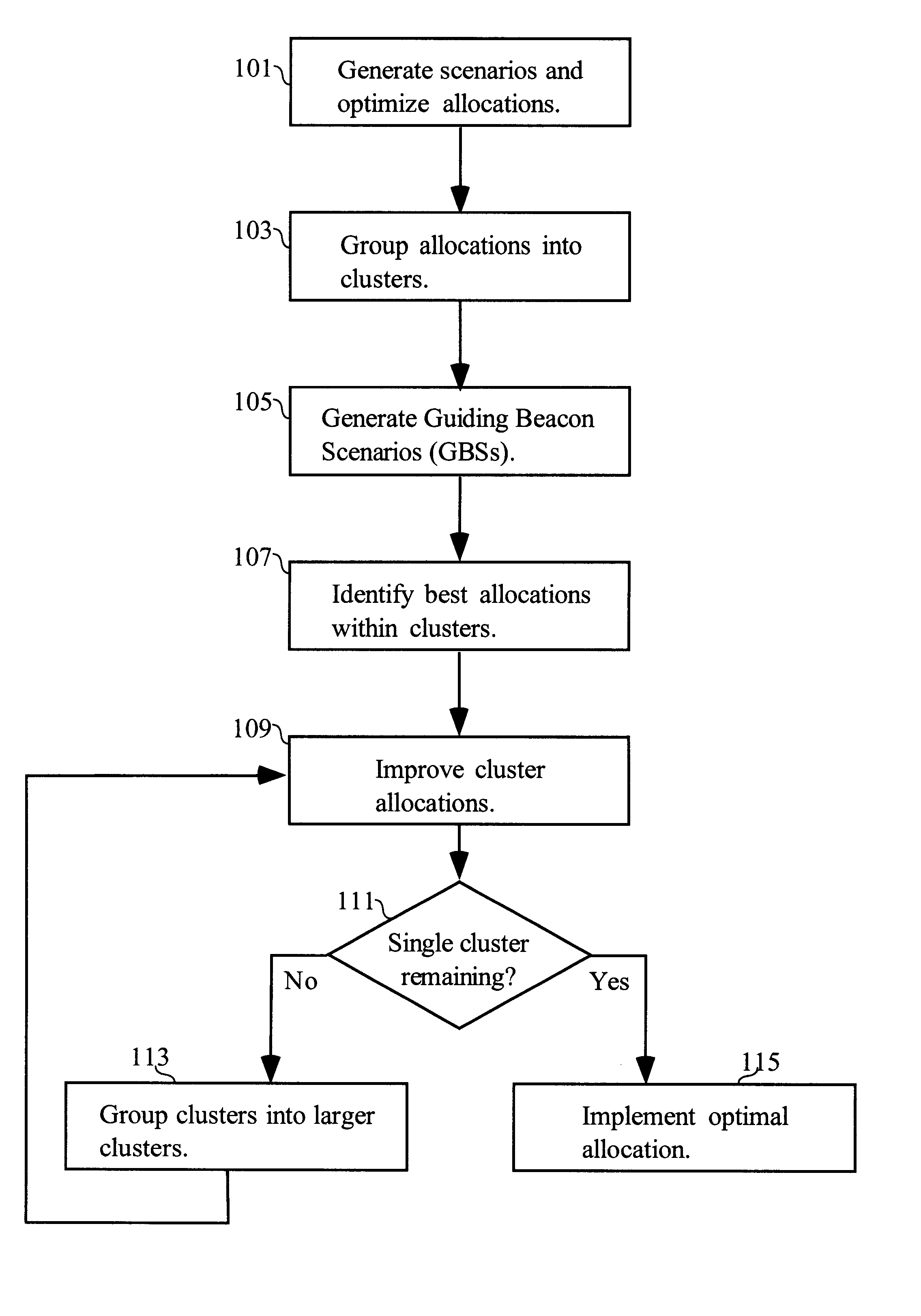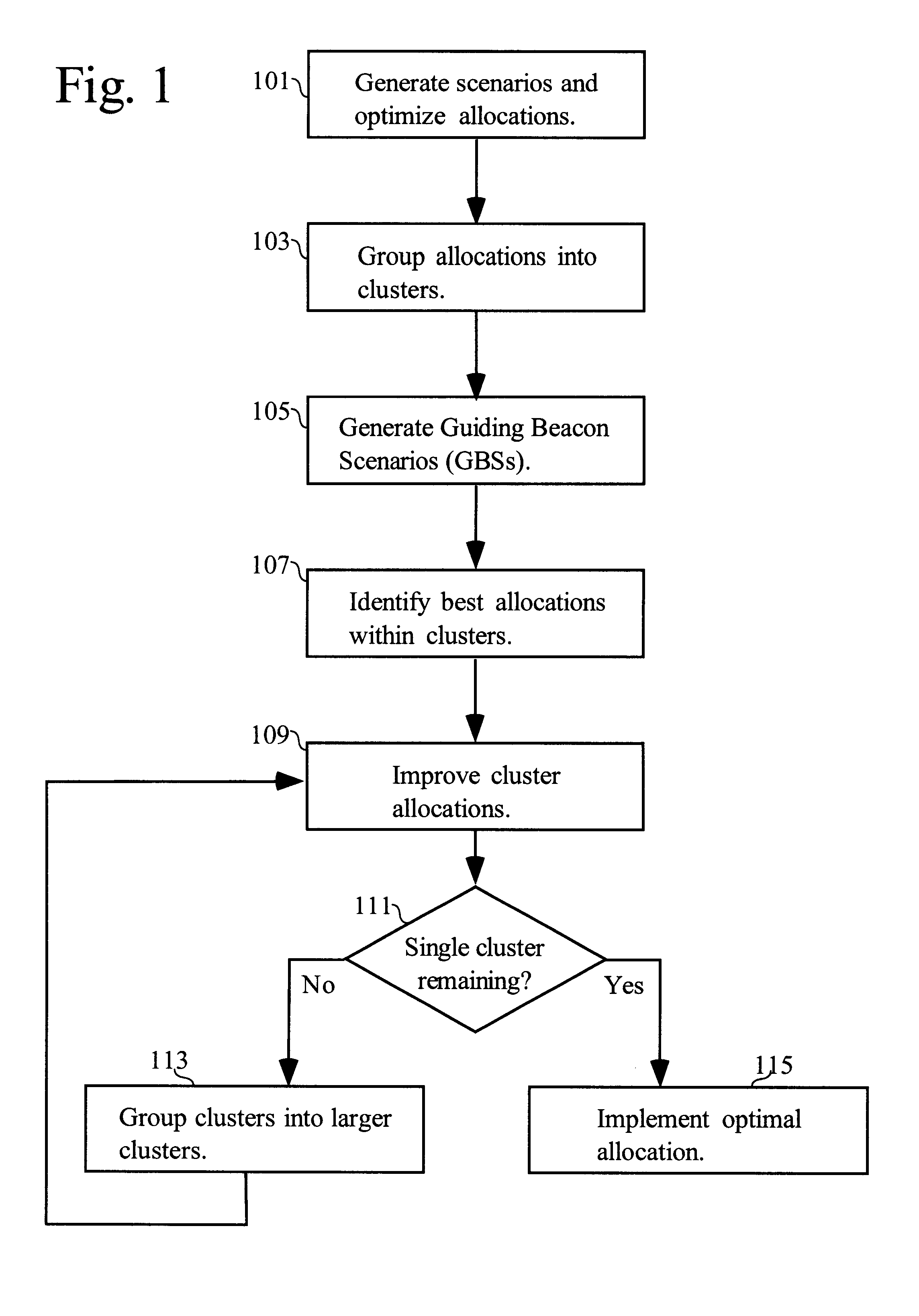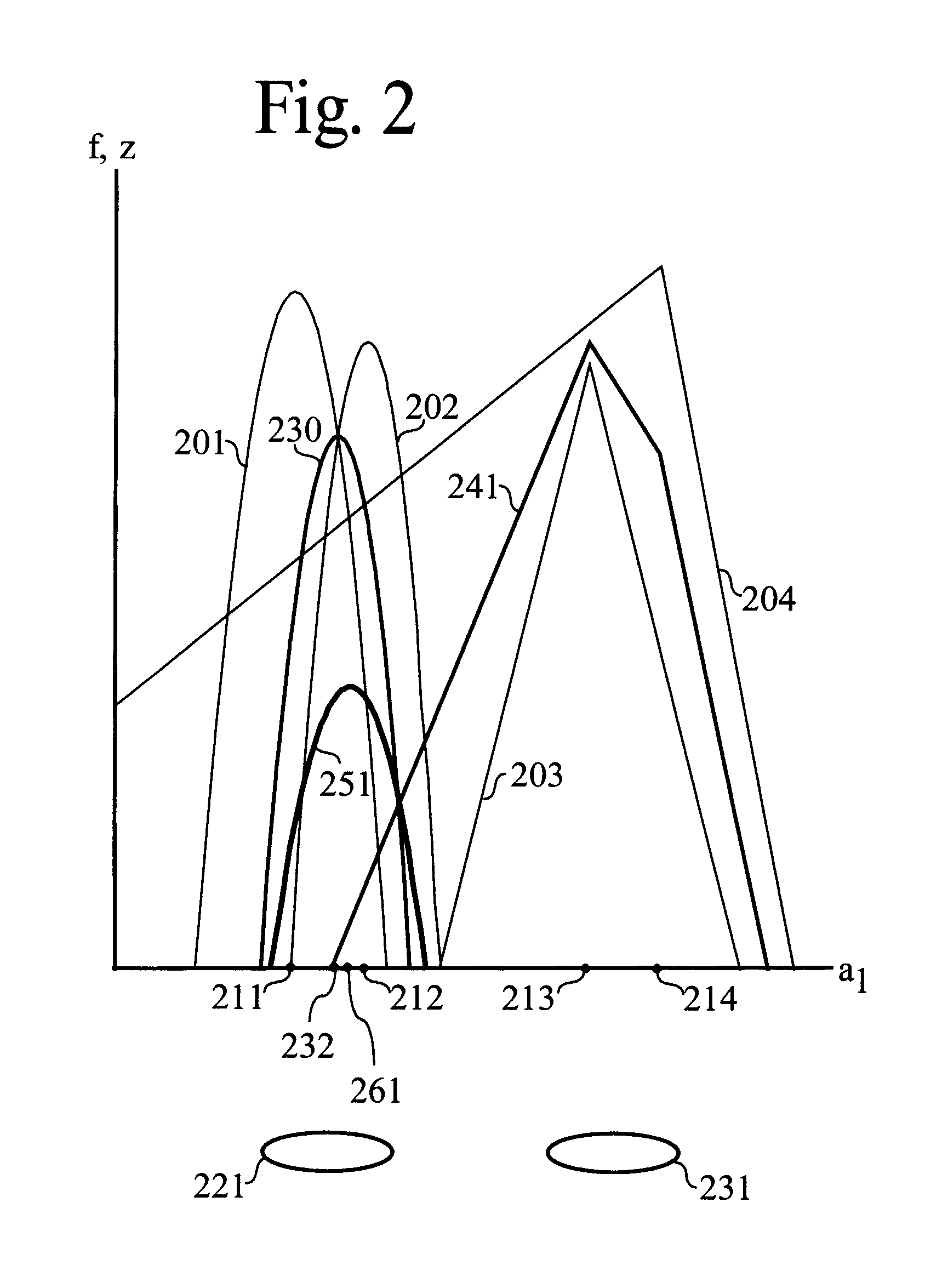Methods and apparatus for allocating resources in the presence of uncertainty
a technology of uncertainty and methods, applied in the field of methods and apparatus for allocating resources in the presence of uncertainty, can solve the problems of difficult multi-stage allocation, difficult to handle multiple-stage allocation, and practically impossible enumeration and valuation
- Summary
- Abstract
- Description
- Claims
- Application Information
AI Technical Summary
Benefits of technology
Problems solved by technology
Method used
Image
Examples
example 2
Cash Management with Uncertain Receipts and Uncertain Payouts
Corporate treasurers typically manage cash in order to meet cash requirements and to maximize return. Both future requirements and future returns are frequently uncertain, and this invention can help optimize in the presence of such uncertainty.
The first step is to generate scenarios. Each stage of each scenario (i.e., each w vector) has the following:
A) for each existing and possible-future investment:
cash requirements
cash receipts
acquisition price
divestiture price
B) contingent realizations of:
extra cash requirements
extra cash receipts
C) status data concerning:
interest rates
stock market conditions.
After the scenarios are generated, they are loaded into the scenario-tree and wScenario objects and, for each wScenario, the NativeOptimizer function is executed. In this case, the NativeOptimizer function can call DeterministicOptimizer, with iFlexStage equal to one.
The DeterministicOptimizer optimizes cash management, given a ...
example 3
Optimizing a Financial Portfolio with Uncertain Future Returns
An investor owns various financial instruments (FIs), cash, stocks, bonds, derivatives (options), commercial paper, etc. The investor wants to maximize the VNM-utility portfolio-value as of a year from now.
Scenarios are generated using state-of-the-art techniques. For each FI that is or may be owned, twelve monthly prices and returns are included in each scenario.
After the scenarios are generated, they are loaded into the scenario-tree and wScenario objects, and the NativeOptimizer function is executed. In this case, the NativeOptimizer function can call DeterministicOptimizer, with iFlexStage set equal to one.
The DeterministicOptimizer optimizes the purchases and sales of FIs, assuming the scenario occurs with certainty. This optimization may consider tax effects, transaction costs, discrete-block-size transacting requirements, etc. When first-stage allocations are optimized (i.e., iFlexStage=1) and if multiple first-sta...
example 4
Portfolio Replication with Uncertain Coupling
Some investment institutions need to replicate a portfolio, but cannot obtain the portfolio's individual financial instruments (FIs). Instead, other FIs are purchased to compose an imitation portfolio (IP) that is expected to perform like the genuine portfolio (GP).
Such mimicry can be optimized with the present invention in an manner analogous to the portfolio example immediately above. Here, only first-stage allocations (a.sub.1) that are expected to optimally endure a single realization of random events (w.sub.1) are required. Scenarios are generated using state-of-the-art techniques. Each scenario comprises single-period performance samples for each of the GP's FIs, and for each of the FIs that can be used in the IP.
After the scenarios are created and loaded into the scenario-tree and wScenario objects, the NativeOptimizer function allocates cash to the FIs that can be used in the IP, such that the return of the IP equals the return of...
PUM
 Login to View More
Login to View More Abstract
Description
Claims
Application Information
 Login to View More
Login to View More - R&D
- Intellectual Property
- Life Sciences
- Materials
- Tech Scout
- Unparalleled Data Quality
- Higher Quality Content
- 60% Fewer Hallucinations
Browse by: Latest US Patents, China's latest patents, Technical Efficacy Thesaurus, Application Domain, Technology Topic, Popular Technical Reports.
© 2025 PatSnap. All rights reserved.Legal|Privacy policy|Modern Slavery Act Transparency Statement|Sitemap|About US| Contact US: help@patsnap.com



